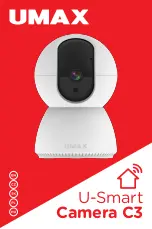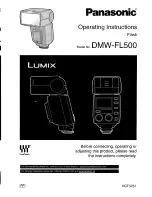
114
VQT2X62
VQT2X62
115
Usage cautions and Notes
About the waterproof/dustproof and anti-shock performance
●
The camera’s waterproof/dustproof performance complies with IP68. This enables
recording for up to 60 minutes at a depth of 3 m (10 feet).
∗
1
∗
1
This means that the camera can be used underwater for the specified time and specified
pressure, in accordance with the handling method described by Panasonic. This is not a
guarantee of no breakdowns, no malfunctions, or complete waterproofing under all conditions.
●
The supplied accessories are not waterproof (excluding the hand strap and silicone
jacket).
●
The camera complies with ‘MIL-STD 810F (Method 516.5-Shock)’, having cleared a
drop test from a height of 1.5 m (5 feet) onto 3 cm (0.10 feet) thick plywood.
∗
2
∗
2
This is not a guarantee of no breakdowns, no malfunctions, or complete waterproofing under all
conditions.
The waterproof performance is not guaranteed if the camera is subjected to an impact, such as
being hit or dropped.
●
If the camera is subjected to an impact, it is recommended that you contact your
nearest Service Centre or repair information centre to have the camera inspected
(subject to a fee) for its waterproof performance.
●
When using the camera in an environment that is exposed to splashing liquids such
as hot spring water, oil, or alcohol, the waterproof/dustproof or anti-shock performance
may deteriorate.
●
Any malfunction caused by the customer’s mishandling, such as water entering the
camera, is not covered by the warranty.
For details, read ‘(Important) About the waterproof/dustproof and anti-
shock performance of the camera’. (
→
8)
Using in a cold environment or at low temperatures
●
Your skin may be damaged if you directly touch the metal parts of the camera
for a long time in a cold environment (places such as ski resorts where the
temperature is below 0 °C). Wear gloves or other protective gear when using the
camera for a long time.
●
The performance of the battery (number of recordable pictures/recording time)
may drop temporarily when using the camera between -10 °C and 0 °C (in cold
environments such as ski resorts).
●
The battery cannot be recharged when the temperature is below 0 °C. (The charging
light blinks when the battery cannot be recharged.)
●
When the camera is cold, such as when it is used in a cold environment, the
performance of the LCD monitor may drop temporarily immediately after turning
on the power. For example, the monitor may be slightly darker than usual, or ghost
images may appear. Keep the camera warm when using it in a cold environment. The
performance recovers when the internal temperature rises.
●
When using the camera in a cold environment such as a ski resort, snow or water
droplets may enter the gaps around the zoom button, Power button, speaker, or
microphone and freeze, resulting in the following phenomena. This is not a malfunction.
• Camera parts may not move easily.
• The sound volume may drop.
• The card/battery door or terminal cover may not open easily.
Using in a cold environment or at low temperatures (continued)
●
When using the camera in a cold environment, keep the camera warm by placing it in a
warm place, such as inside your thermal gear or clothes.
When in use
●
Camera may become warm if used for long periods of time, but this is not a fault.
●
To avoid jitter, use a tripod and place in a stable location.
(Especially when using telescopic zoom, lower shutter speeds, or self-timer)
●
Keep the camera as far away as possible from electromagnetic equipment (such
as microwave ovens, TVs, video games etc.).
• If you use the camera on top of or near a TV, the pictures and sound on the camera
may be disrupted by electromagnetic wave radiation.
• Do not use the camera near cell phones because doing so may result in noise
adversely affecting the pictures and sound.
• Recorded data may be damaged, or pictures may be distorted, by strong magnetic
fields created by speakers or large motors.
• Electromagnetic wave radiation generated by microprocessors may adversely affect
the camera, disturbing the pictures and sound.
• If the camera is adversely affected by electromagnetic equipment and stops functioning
properly, turn the camera off and remove the battery or disconnect the AC adaptor
(optional). Then reinsert the battery or reconnect the AC adaptor and turn the camera
on.
Do not use the camera near radio transmitters or high-voltage lines.
• If you record near radio transmitters or high-voltage lines, the recorded pictures and
sound may be adversely affected.
●
Do not extend the supplied cord or cable.
●
Do not allow camera to come into contact with pesticides or volatile substances (can
cause surface damage or coating to peel).
●
Never leave the camera and the battery in a car or on a car hood in the summer.
It may cause leakage of the battery electrolyte, generation of heat, and may cause a
fire and the battery to burst due to the high temperature.
●
This camera has been confirmed to operate correctly at -10 °C. Please refer to the
preceding item ‘Using in a cold environment or at low temperatures’ for details.




































